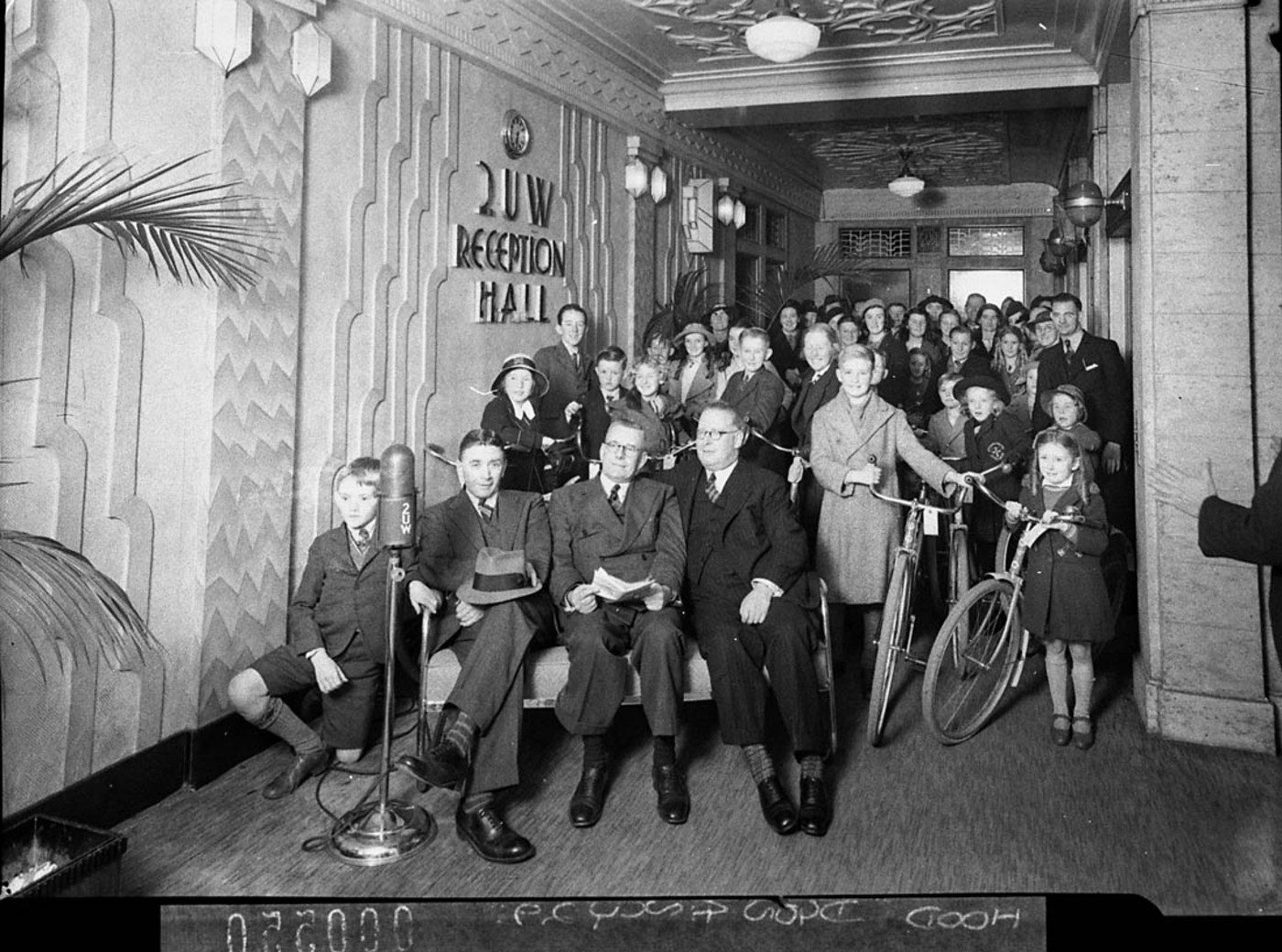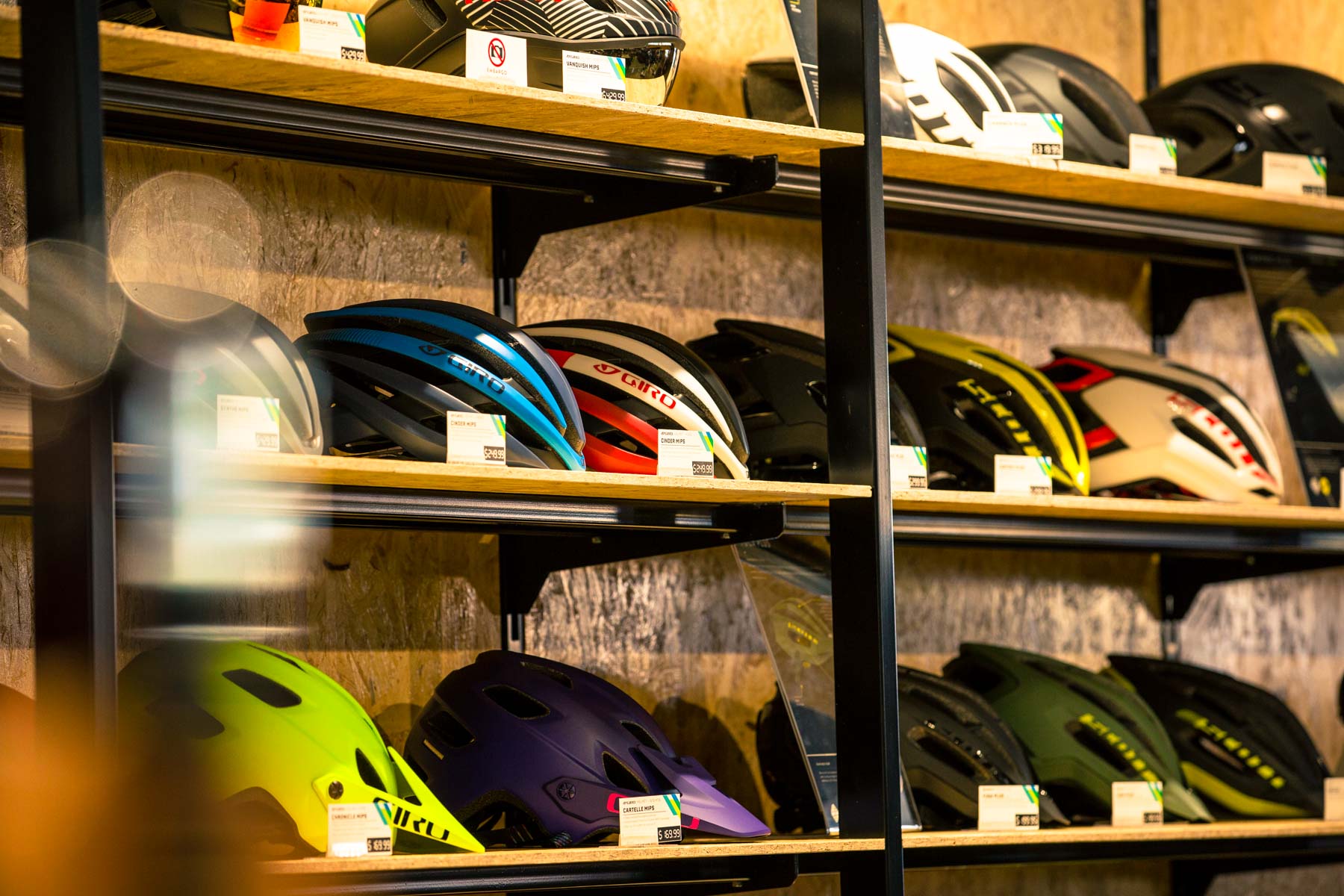As a reader of Flow, you probably ride a lot and have bought a lot of bikes and P&A (which is what the industry calls parts and accessories) over the years. But how much do you know about who actually makes your gear and who distributes and sells it?
This will be the first of an ongoing series of articles that looks behind the scenes at the bicycle industry, both within Australia and globally. For this initial article, I’m going to give you an overview of the Australian bicycle industry.

Related:
- Forbidden Albek Racing creates a new pathway to the World Cup for Aussie downhillers
- Opinion | Where have all the high-end alloy bikes gone?
- School Is in Session | How Rocky Trail Academy is getting school kids stoked on mountain bikes
Back in my day | A short history of bikes in Australia
Bicycles boomed in Australia from about the 1870’s onwards. Few people realise that throughout this era Melbourne was both the largest and most prosperous city in the world, thanks to the Victorian gold rush.
Bicycles back then were expensive. The best from around the world were imported to Australia but a vibrant local manufacturing industry also sprung to life, the most famous and enduring brand being Malvern Star, which is named after the inner Melbourne suburb of its birthplace.

The market was actually subdued pre-Covid with imports dropping under 1.2 million in the two years prior. Then as everyone who rides a bike knows, all hell broke loose!
Even as late as the 1970s, Malvern Stars were being manufactured in huge quantities in Australia, not only in Melbourne, but in factories around Australia, including far north Queensland and Perth. I spoke to an ‘old timer’ who used to work in the Perth factory and said it had 40 staff and supplied more than half of the total WA bicycle market.
Of course, with the development of shipping containers, air freight, better roads and other changes, it became cheaper to import from Asia than manufacture here. But the legacy of Malvern Star still influences the shape of today’s Australian bicycle industry. Melbourne is by far the largest centre of bicycle importing and wholesaling and you can trace the links directly back, via key employees starting new bike businesses in what was already their hometown.
These days, apart from some small scale, high end custom builders, there are virtually no bicycles manufactured in Australia.

Today’s Australian Bicycle Industry by the Numbers
Unfortunately our industry still does not collect and publish sales numbers, but there are import numbers available for conventional bikes, e-Bikes and several P&A categories. Making the logical assumption that everything imported is eventually sold, this gives us a reasonable overview.
In the decade leading up to Covid, the number of imported conventional bikes (acoustic, non-E, or whatever you prefer to call them) was typically around 1.2 to 1.3 million each year, with the all-time record of 1.419 million in the 2014/15 financial year — Australian financial years run from 1 July to 30 June. These numbers cover all bikes, from kids bikes to ‘K-Mart junkers’ through to higher quality bike shop bikes.

The market was actually subdued pre-Covid with imports dropping under 1.2 million in the two years prior. Then as everyone who rides a bike knows, all hell broke loose!
In 2020/21 the market jumped by 520,000 units to an all-time record of 1,690,637 bicycles imported. This was still not enough, with many bikes unavailable, but international manufacturers could not keep up.
The e-Bike market today is pretty much on par with conventional bikes in terms of total value.
Boom and bust
After another boom year at 1.53 million units, Covid subsided, people started travelling overseas again and spending a fortune on many other things they couldn’t do during the height of the pandemic. The bicycle boom busted and there was a huge bicycle stock overhang — leading to the massive discounts we’ve seen across the industry.
Import quantities have plunged — in the calendar year 2023, only 666,393 conventional bikes were imported — the lowest number since 1998, when our population was much smaller.

But conventional bike imports only tell part of the story. E-Bikes totalled virtually nothing until a decade ago, and even in 2018, only 65,000 units were imported. That number grew by about 46% per year for five years straight, until a peak of 420,000 units in 2022. Although imports have fallen from this peak, the decline has been less dramatic for e-Bikes than for conventional bikes.
We also have access to data showing the unit value and total value of bicycle imports. Because the average unit value of e-Bikes imported into Australia is 2.5 to three-times higher than for conventional bikes, the e-Bike market today is pretty much on par with conventional bikes in terms of total value.
Just like e-MTBs have been a game changer for riders and mountain bike park operators alike, e-Bikes in general, led by e-MTB’s have been a game changer for the Australian bicycle industry. In today’s tough times, they’re a key reason for many companies staying in business.

Distribution Channels
Traditionally in Australia a small group of importer/wholesalers both bring the bicycles in from overseas and then sell them to bicycle stores.
A few decades ago, these companies were all independent and locally owned. Today, just about all of the ‘majors’ are subsidiaries of the global bike brands, with the largest locally owned wholesalers being closely tied to larger Australian companies.
You can get an idea of the scale of these companies, based upon their latest published financial statements. Foreign owned companies are required to submit their financials to ASIC (the Australian Securities and Investments Commission) who allow anyone to buy copies.
Take Pedal Group, which includes 99 Bikes and the wholesaler Advance Traders and whose largest brands include Merida and Norco amongst many others, is the largest bicycle business in Australia with a turnover of $319 million in 2022/23 after a peak of $368 million the previous year. That’s a million dollars in sales per day.
The next five companies are extremely sensitive about having their financial reports published, even though it’s publicly available information. You can probably guess the brands and their sizes scale down from $130 million to $65 million per year in sales.
Overall, I estimate the core bicycle industry as having bicycle and P&A hardgoods sales of about $2 billion per year in Australia. Although a major ‘Australian Cycling Economy Report’ by accounting firm Ernst & Young, which took into account related events and other multipliers, put the figure far higher. In their 2023 update they estimated that more than 60,000 jobs and $18.6 billion worth of economic and social contribution came from the broader bicycle and e-scooter industries.

Despite all of this competition, good local bike shops can still remain viable and to paraphrase Mark Twain, reports of their death are greatly exaggerated.
Bicycle Retail Channels
Traditional bike shops have faced tough competition from three sides simultaneously: mail order, corporately owned bike shops and big box retailers. I’ll quickly review these three in order.
Until recent years, it was looking like the mail order retailers such as Chain Reaction (later bought by Wiggle), Pushys Online, Mountain Bikes Direct, Bicycles Online and others were going to take a huge slice of the retailing pie. But these companies have struggled, particularly post-Covid, with Wiggle CRC going bankrupt last year — and in March were sold to Frasers Group which also owns Evans Cycles and ProBikeKit but with all Australian operations ceased — and others scaling down.
99 Bikes is the largest retail chain in Australia, followed by Trek’s corporate-owned stores. Specialized has bought far fewer stores, and Giant’s policy has been to stay out of retail, even selling off the few corporate-owned stores that they had accumulated. Last year, Sheppard Cycles, importer of Scott, Avanti, and other brands, bought the Bicycle Superstore chain in Victoria.

On the big box market, Anaconda has been around for a while and having limited impact, mainly at the lower end, but Decathlon — though bikes from its Van Rysel and Rockrider brands, are both being raced on the World Tour and World Cup respectively — is a newer player to watch, being possibly the world’s biggest bicycle retailer, thanks to a huge global network of stores.
Despite all of this competition, good local bike shops can still remain viable and to paraphrase Mark Twain, reports of their death are greatly exaggerated.

What’s Next?
In the short term future you might see the impacts of the stock importing pendulum swinging too far in the conservative direction, so don’t be surprised if there are some shortages and price increases.
But in the longer term, I think that the Australian bicycle industry has a bright future.
In an upcoming article, of Stats with Latz, Phil explores the intricacies of where things are made, who owns what, and the curious bottlenecks of the bike industry’s supply chain
About The Author | Please meet Phil Latz
Phil Latz has had a lifetime involvement in many aspects of cycling. He started racing at age 10, and a decade later, he raced internationally, including a season for a team based in France. In 1989, he and his wife co-founded Bicycling Australia magazine, which was followed by Mountain Biking Australia, Bicycling Trade, Bicycling YearBook, Triathlon Sports, Where to Ride Cycling Guidebooks, the Bicycling Australia Show, Where to Bike LLC (USA) and a range of other activities.
Phil sold the media business after 25 years and then focused upon advocacy, helping to set up We Ride Australia and co-founding World Bicycle Relief Australia. In 2019, he co-founded a new media company that now publishes The Latz Report newsletter, website and YearBook for the bicycle trade and the Micromobility Report newsletter, website, YearBook and podcast (launching mid 2024) which covers a wide range of topics related to e-mobility and infrastructure. In 2020 Phil established Latz Business Coaching, through which he coaches bicycle business owners across Australia and NZ.
Phil has co-founded two annual charity rides, has served on the board of Bicycle Industries Australia (BIA) and consulted to a wide range of cycling related organisations. Today, Phil is passionate about making Australia a better place for his grandkids to ride bikes. He still rides frequently and expects to have bicycle wheels fitted to his coffin.
Photos: Flow MTB, Mitchell Library, The State Library of New South Wales, Bartek Wolinski / Red Bull Content Pool








